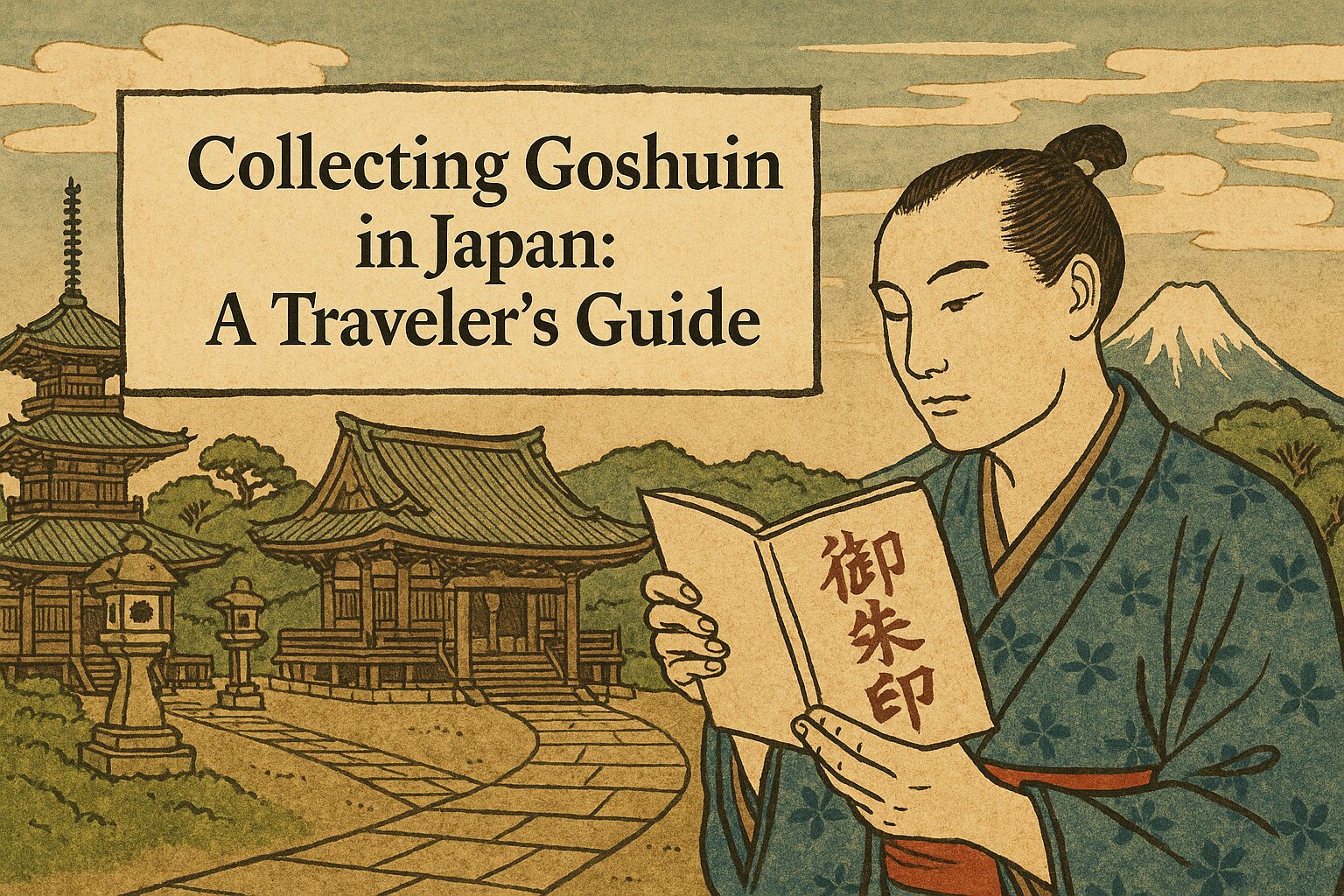👋 Introduction
If you visit a Japanese temple or shrine, you might notice travelers carrying small books filled with beautiful calligraphy and red seals. These are Goshuin (御朱印) – unique stamps given by temples and shrines in Japan. For foreign visitors, Goshuin are not just stamps, but a special cultural experience and a memorable souvenir.
In this guide, we’ll explain what Goshuin are, how to receive them, and why they are so popular among travelers.
1. What is Goshuin?
Goshuin are handwritten seals and calligraphy given by Buddhist temples and Shinto shrines in Japan. Traditionally, they are proof of a pilgrimage or prayer. The seal usually includes:
- The temple/shrine’s name
- The date of your visit
- Special inscriptions such as prayers or blessings
Goshuin are collected in a Goshuin-chō (御朱印帳), a special stamp book sold at temples, shrines, and even stationery shops. Each Goshuin is unique, making it a highly personal record of your spiritual journey in Japan.
2. Where Can You Get Goshuin?
You can receive Goshuin at many shrines and temples across Japan. Look for a small sign that says “御朱印” (Goshuin) or ask politely at the reception area. Some famous spots include:
- Sensō-ji (Asakusa, Tokyo)
→https://www.senso-ji.jp/visit/jumotsu3.html - Fushimi Inari Taisha (Kyoto)
→https://fushimiinari.or.jp/goshuin/ - Kiyomizu-dera (Kyoto)
→https://www.juyosho.com/
Not every temple or shrine offers Goshuin, but many popular ones do.
3. How to Receive Goshuin (Etiquette)
To receive a Goshuin, follow these steps:
- Pray or show respect first – Goshuin are not just souvenirs, but proof of worship.
- Go to the Goshuin desk (朱印所).
- Hand over your Goshuin book to the staff.
- Pay a small fee (usually 300–500 yen).
Important Etiquette
- Don’t treat it like a “stamp rally.” Each Goshuin is sacred.
- Be polite and patient – writing Goshuin takes time.
- Always bring cash, as electronic payments are rare.
4. Goshuin as Souvenir & Cultural Experience
For travelers, Goshuin are more than a religious item – they are:
- Art pieces: each Goshuin is handwritten with care.
- Memories of your journey: a record of where you’ve visited.
- Unique souvenirs: every Goshuin book becomes a one-of-a-kind collection.
Many Goshuin books also feature beautiful designs on their covers, from traditional Japanese patterns to modern motifs. They make wonderful gifts or keepsakes.
5. Tips for Foreign Travelers
- Use the Japanese word “Goshuin” instead of calling it just a “stamp.”
- You can buy Goshuin books at temples, shrines, or even department stores.
- Some shrines and temples offer special seasonal or limited-edition Goshuin.
- Always remember: receiving a Goshuin is about respect and gratitude.
🎯 Final Thoughts
Collecting Goshuin is one of the most rewarding cultural experiences in Japan. It connects you to centuries of tradition, gives you a beautiful keepsake, and makes your trip unforgettable.
So next time you visit a shrine or temple in Japan, don’t forget to bring your Goshuin book and start your own collection of these spiritual treasures.
If you enjoyed this article, feel free to check out my other posts as well.
Check this out too! → Japanese Shrines vs. Temples: What’s the Difference?



コメント